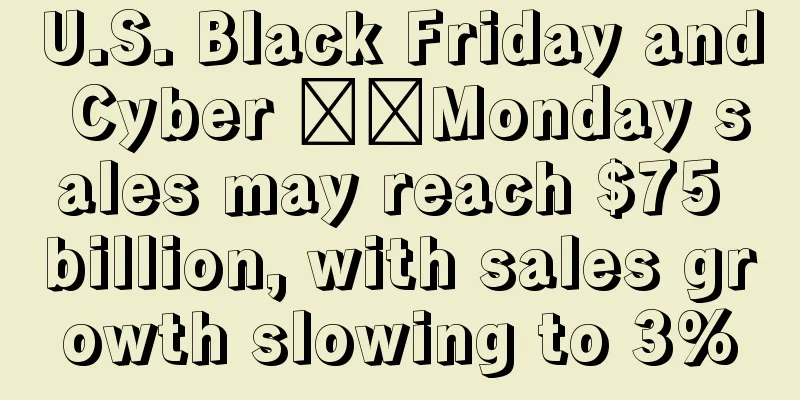|
As we enter 2022, the cross-border circle is still in turmoil. Under the ever-changing and upgrading industry trends, cross-border e-commerce has entered a new era. With the change of consumer shopping habits and the rise of social media sales, the barriers to the global e-commerce market are gradually being broken down. Cross-border business seems to be easier to do, but also more difficult. On the one hand, the number of third-party e-commerce platforms is increasing, and on the other hand, independent websites are emerging. The ever-changing market structure is impacting Amazon's dominance in e-commerce. Among the competitors of Amazon, Shopify, a Canadian store opening platform, is undoubtedly the biggest dark horse. Foreign media estimates that US e-commerce sales will grow by 16.1% this year to reach $1.06 trillion. Today, Shopify's total sales account for 40% of Amazon's, and its position is second only to Amazon. The rise of independent websites has opened up a new chapter in the market. The cross-border track may have more possibilities. In this competition for the global e-commerce traffic pool, who will be better, Amazon or Shopify? Let's take a look at the recent developments of the two. Steady development: Amazon's growth rate slowed down in 2021 According to the financial report, Amazon's Q4 revenue was $137.4 billion , lower than the market expectation of $137.8 billion, a year-on-year increase of 9.4% . It is worth noting that this is the first time that Amazon has seen single-digit revenue growth since 2017 . In 2021, Amazon's revenue was US$469.8 billion , a year-on-year increase of 22% . In terms of profit, Amazon's Q4 net profit was $14.3 billion, a year-on-year increase of 98%, which seems to be a strong growth. However, of the $14.3 billion in net profit, about $11.3 billion came from the increase in the stock of Rivian, an electric car company held by Amazon, rather than operating income. In addition, Amazon's net profit for the whole year of 2021 was US$33.4 billion, a year-on-year increase of 56%. The specific revenue share of each business department is as follows: - E-commerce revenue was $119.7 billion, accounting for 87% of total revenue;
- AWS revenue was $17.8 billion, up 40% year-on-year, accounting for 13% of total revenue;
- Advertising revenue was US$9.7 billion, up 32% year-on-year, accounting for 7% of total revenue.
By combing through Amazon's financial report data, we can get the following important signals: 1. Online e-commerce revenue growth slows down Although Amazon's e-commerce business revenue still accounts for the largest proportion, its online store revenue has grown slowly, with revenue of US$66.075 billion in the fourth quarter, a year-on-year increase of only 1%, the lowest growth rate in the past two years. 2. Sellers lack business growth momentum In 2021, the growth rate of Amazon's third-party seller e-commerce business showed a continuous downward trend in the four quarters, and the annual scale growth only reached 11%. This also reflects that after a large number of new sellers entered the market, Amazon's internal competition continued to intensify, and the third-party seller e-commerce business was obviously lacking in momentum. 3. Cash flow is tight and profits are lower than expected In the fourth quarter of 2021, operating cash flow was US$46.3 billion, a year-on-year decrease of 30%; free cash flow was a net outflow of US$9.1 billion, a year-on-year decrease of 70%. Most of Amazon's profits and revenues in 2021 came from its advertising business, cloud computing business, stock gains, etc. For this North American e-commerce giant, such results are not excellent. 4. Self-operated business faces many challenges It is understood that Amazon's self-operated business experienced negative growth in 2021. On the other hand, Amazon has also been hit by antitrust issues in Europe and the United States many times, and is mired in lawsuits and fines. According to previous reports, the antitrust bill drafted by the U.S. Congress stipulates that Amazon must separate its own business from the third-party seller market and unify its first-party and third-party businesses. In addition to the above problems, Amazon CEO Andy Jassy also said that due to the impact of the new coronavirus variant Omicron, labor shortages and inflation problems will continue until the first quarter of 2022. In view of the decline in performance and internal and external challenges in 2021, Amazon's performance outlook for 2022 is also slightly conservative. Net sales in the first quarter of 2022 are expected to be between US$112 billion and US$117.9 billion, a year-on-year increase of 3%-8%; revenue is US$3 billion to US$6 billion, and revenue is expected to decrease by US$1 billion due to the depreciation of servers and network equipment . Compared with Amazon's increasingly slow performance growth, Shopify has achieved great success in the past two years. Rising star: Shopify is opening stores like crazy It is learned that after the outbreak of the epidemic, the independent station model is becoming a new trend in e-commerce. Shopify has grown at an astonishing rate in the past two years and has become the most valuable technology company in Canada. Shopify's market value is reflected in many aspects. The first is the soaring stock price. In the past five years, Shopify's stock price has increased more than 48 times. From the beginning of 2020 to the end of 2021, Shopify's market value soared by more than 240%, from US$46 billion to more than US$150 billion. At the same time, Shopify has become a store opening maniac. Between March 2020 and January 2022, the number of online stores on Shopify increased by 200%, with 2.5 million new stores added in less than two years. In terms of company size, Shopify's revenue has nearly tripled in the past two years, its GMV and number of employees have doubled , and the number of merchants using Shopify's services is almost twice that of 2019. Finbox predicts that Shopify's revenue will grow at a compound annual growth rate of more than 38% over the next five years, with revenue expected to be close to US$14.6 billion in 2026 and nearly US$50 billion in 2030. However, on the fast track of rapid development, Shopify has gradually revealed hidden worries after accelerating its recovery from the epidemic. Last Wednesday, Shopify released its full-year financial report for 2021, and the business data was mixed. In the fourth quarter of 2021, Shopify's revenue and profits exceeded analysts' expectations. The financial report showed that Shopify's revenue in the fourth quarter was US$1.38 billion, a year-on-year increase of 41%; its net loss was US$370 million, while it made a profit of US$120 million in the same period of 2020. Looking at the full year, Shopify's total revenue in 2021 reached US$4.6 billion, exceeding analysts' expectations. At the same time, the total merchandise volume (GMV) in the quarter grew strongly to US$54.1 billion, driving business solutions to grow 47% year-on-year, breaking through US$1 billion for the first time to reach US$1.03 billion. It is worth mentioning that as the boost from the epidemic weakens, Shopify expects its revenue growth in the coming year to be lower than 57% in 2021. Revenue in the first quarter of 2022 is expected to decline year-on-year, and the growth rate in the fourth quarter will be the highest in the whole year. Although Shopify has signaled that its growth rate will gradually slow down, its market potential to challenge e-commerce giants cannot be underestimated. It is learned that Shopify's current scale is almost close to 50% of Amazon's market, and the overall growth rate of Shopify sellers has far exceeded that of Amazon's third-party sellers. Compared to Shopify's explosive growth, Amazon's growth seems to be much smaller. However, the two platforms have different positioning and development starting points, and the platform potential cannot be determined solely from performance data. Although the two companies have not openly declared that they consider each other as competitors, Amazon and Shopify have already begun a series of "open and secret struggles" in the turbulent online market. Secret competition: the competition between two e-commerce giants It is understood that unlike e-commerce platforms such as Amazon and eBay, Shopify does not sell goods directly to consumers. Instead, it is a platform that provides tools and services specifically for sellers. It helps sellers open stores and expand markets smoothly through payment, marketing, transportation and other tools. If Amazon is dedicated to pleasing consumers, then Shopify is an open platform that helps sellers reach consumers. Looking back at the rapid development in the past two years, Shopify has been working tirelessly to catch up with Amazon and has successfully entered the first echelon of cross-border e-commerce through the following ways. 1. Alliance and cooperation with Chinese companies It is learned that last month China's JD.com announced a partnership with Shopify, becoming Shopify's first strategic partner in China. It is reported that JD.com will open a green channel for cross-border e-commerce for international brands on Shopify to help them quickly enter the Chinese market. In addition, JD.com has also established a DTC independent station through Shopify to allow Chinese brands to sell directly to consumers in the international market. This cooperation can be described as a win-win choice. With the help of JD.com, Shopify can not only connect to the Chinese merchant market, but also enhance its international influence and visibility. For JD.com, this alliance also has important strategic significance for accelerating its e-commerce overseas expansion. 2. Keep launching new tools In the past two years, Shopify has been very active, launching new tools many times and launching a series of new initiatives to attract more sellers. Launched the search engine optimization plug-in Yoast SEO for merchants to create better product pages; launched Gift Shop for buyers to browse a curated gift collection and choose from a list of products from Shopify merchants; launched TikTok Shopping - allowing merchants with ikTok business accounts to link products directly to independent sites; launched a service for selling NFT products, allowing sellers to create and sell NFT products in stores through the service. By launching new tools to provide sellers with more user-friendly services, Shopify's website building and marketing capabilities are constantly improving with each update, providing a safe haven for sellers' brands to expand overseas. 3. Betting on Shop to enhance competitiveness It is learned that Shopify is vigorously promoting its shopping app "Shop" to strengthen its competitiveness with its main competitor Amazon. Shopify is also constantly upgrading and optimizing Shop's payment processing system to develop its payment products. Shop was the third most downloaded shopping app in the United States in 2021, with 30 million downloads, just 10 million less than Amazon. Analysts believe that Shop gives Shopify the opportunity to compete with Amazon as an independent consumer brand. Amazon is also not showing weakness in the face of increasingly powerful competitors. Insiders said that Amazon is developing a product similar to Shopify, and Amazon's tools will allow sellers to set up independent online stores. It is reported that few Amazon sellers have switched to Shopify and succeeded. Similarly, Shopify sellers have a high chance of failing in the transition. Therefore, the growing GMV of Amazon and Shopify is the success of two different e-commerce models. But what is certain is that driven by the independent station craze, the e-commerce model of connecting with consumers through self-built websites and stores will become more popular. Both sellers and consumers will have the initiative to choose other platforms and will no longer be restricted to a certain platform. Who will compete: Who will become the mainstream of cross-border e-commerce? The rise of independent sites is not accidental, but the result of the combined effect of multiple factors. In 2021, Amazon sellers experienced an unprecedented test of the times. As Amazon cracked down on illegal behaviors, several top sellers suffered heavy losses. Account suspension, layoffs, and bankruptcy once became hot words in the cross-border circle. Coupled with the influx of a large number of new sellers and the increase in Amazon's fees, the competition on the platform has become increasingly fierce, and profits have been swept away. Many sellers are eager to find new ways out. On the other hand, with the maturity of SaaS website building services and supporting marketing and promotion services in the past two years, independent sites have become one of the main models for companies to go overseas. Gradually, the popularity of independent sites has gradually increased, and even some leading self-operated platforms have surpassed Amazon, such as shein and shopify. According to a survey conducted by Ebrun, 31% of enterprises have already set up independent websites. Among the enterprises that have not established independent websites, 21% are preparing to build websites and implement the DTC model. ▲ Source: Ebang Think Tank "2021 Cross-border E-commerce Development Report" In terms of website building methods, 39% of companies choose to build their own websites. Among SaaS tools, Shopify has the highest usage rate, accounting for 23%. According to the "Cross-border E-commerce Independent Station Development Trend Report", the scale of China's self-operated cross-border export e-commerce has gradually increased in recent years, from 9.8% in 2016 to 21.1% in 2020. There is no doubt that independent sites represented by Shopify have created a new e-commerce model . This model, verified by more successful cases, has been sought after by merchants and capital and has become a new trend. However, the emergence of every trend will be tested by the market and the times. It will take time to answer whether Shopify can eventually sit on the throne of the e-commerce leader. However, the threshold for independent sites is relatively high for novice sellers. It is recommended that cross-border novices start from large platforms and then expand to independent site business after having sufficient funds and supply chain.
|










